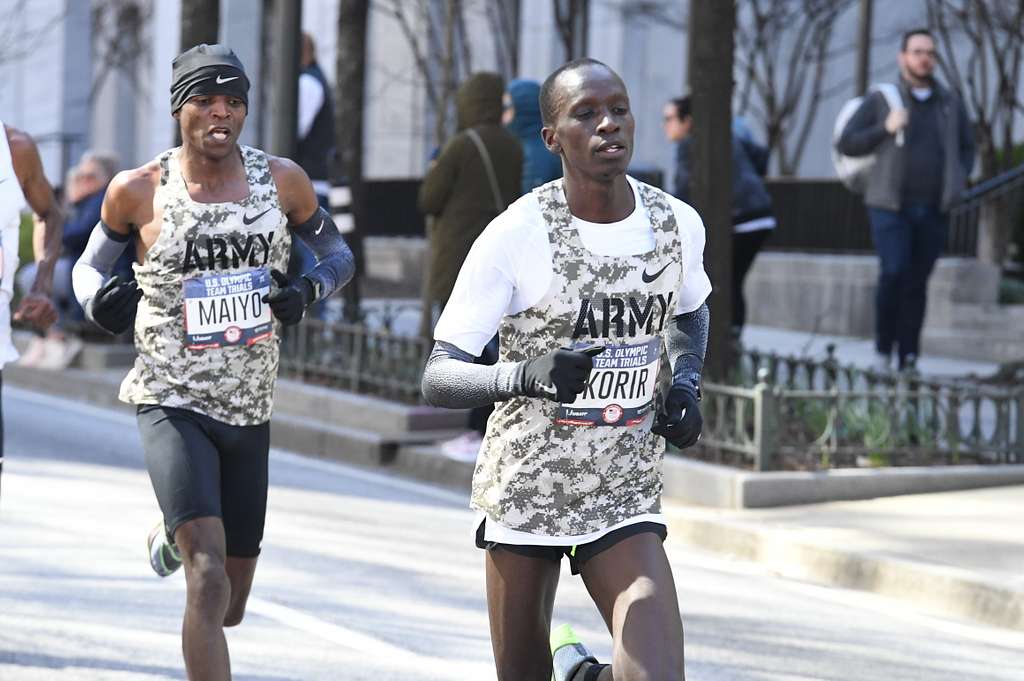How the Team USA Olympic Qualifying System is Damaging U.S. Running
While the Paris Olympics are still 170 days away, qualification for the games has already begun. This past Sunday, the 349 fastest marathoners in the country – 149 women and 200 men – lined up in Orlando, FL, to make the United States Olympic Marathon team. This race is commonly deemed as one of the most fulfilling and magical races to watch. Normally, the top three male and female runners automatically qualify for the Olympics, so spectators and the athletes themselves can watch their Olympic dreams come to life. However, only two men are guaranteed spots in Paris as opposed to the typical three. You may ask, why do the men only have two spots instead of three? This is the doing of World Athletics, who instituted a new Olympic qualifying system following the 2020 Tokyo Olympic Games.
Prior to the 2020 Summer Games, the qualification criteria involved two simple steps. First, athletes must first run equal to or faster than the qualifying standard prior to the Olympic Team Trials qualifying race. For example, in 2020, men must run faster or equal to 2:19:00, whereas women must achieve 2:45:00 or faster. Second, once athletes achieve this time qualifying standard, they all race each other at the U.S. Olympic Team Trials, where they must finish in the top three at the Olympic Team Trials qualifying race. If they achieve both the time and the top three finish, they are officially selected as Olympians for Team USA.
However, for the 2024 Paris Olympics, it is a little more complicated. First, to qualify for the Olympic Team Trials race, men must run faster or equal to the standard of 2:18:00, and the women must run at 2:37:00 or faster. However, while achieving this standard allows you to compete at the Trials, it may not be fast enough to qualify the athlete for the Olympics. There is a separate “Olympic A” standard that athletes who aim to compete at the Olympics must achieve. Men must run 2:08:10 or faster, whereas women must run 2:26:00 or faster. So, if an athlete achieves this standard, they unlock a qualifying spot for their country. However, even if an athlete unlocks one of these spots by achieving the standard, they still need to finish the top three at the Trials, where they will then qualify for Team USA.
Unfortunately, it still gets more complicated. Since this “Olympic A” standard is much faster, only two American men have achieved this time and thus have only unlocked two qualifying spots. However, World Athletics (the governing body of Olympic running) has a clause where if a runner’s world ranking is greater than the top 80, they are deemed Olympic eligible. This entails that if the third male at the U.S. Olympic Team Trials has a ranking greater than 80, then he is qualified for Team USA. However, Leonard Korir, the third-place male at the Trials, is not yet within this top 80. Because of this, he has until May to increase his world ranking above this top 80 threshold.
While this qualifying system was structured with the goal of sending the U.S.’s best runners to the Olympics, it is overly complicated and ruins the spirit of Olympic Qualifying. The marathon is unique in it uses the fewest steps of qualifying, allowing athletes who make it to the Trials a slight taste of what it is like to qualify for the Olympics. However, this magical opportunity has been restructured into a labyrinth of convoluted qualifying times and rankings that draw the focus of the Trials away from the spirit of racing and instead toward a puzzle of politics that the running community itself has yet to figure out.



